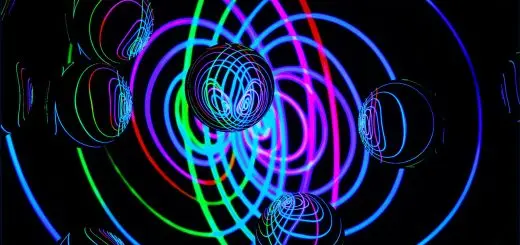Archetypes in Film: Iconic Characters and Tropes

Looking for more amazing products? Check out our online store and explore our collection here! Happy shopping!
Before diving in, please note: This post is for informational purposes only. If you’d like to know more about how we approach topics, feel free to check out our friendly Disclaimer Page.
Hey there, amazing readers! 
We’re committed to delivering quality posts, and your support (even just sticking around despite the ads) means everything to us. So, bear with us, and thanks for helping us keep the good vibes rolling. Now, on to the fun stuff!
TRANSLATE BUTTON AT THE END OF THE ARTICLE
Introduction: Understanding Archetypes in Film
In the realm of cinema, archetypes play a crucial role in shaping characters and driving narratives.
These iconic figures and tropes have been a staple in storytelling for centuries, resonating with audiences on a deep level.
From the valiant hero to the diabolical villain, archetypes provide a framework that helps viewers navigate the complexities of a story.
Understanding these archetypes can enhance our viewing experience and deepen our appreciation for the art of filmmaking.
The Hero: From Luke Skywalker to Harry Potter
The hero archetype is perhaps the most recognizable and beloved character in film.
From Luke Skywalker in Star Wars to Harry Potter in the Wizarding World, heroes are often portrayed as courageous, noble, and determined individuals on a quest to overcome challenges and achieve greatness.
These characters inspire us to embrace our own inner strengths and face adversity with bravery and resilience.
The hero’s journey, as outlined by Joseph Campbell, serves as a blueprint for many iconic films, showcasing the universal themes of self-discovery and transformation.
The Villain: Exploring the Dark Side of Characters
Opposite the hero stands the villain, a character shrouded in darkness and complexity.
Villains like Darth Vader in Star Wars or the Joker in The Dark Knight challenge our notions of morality and push the boundaries of conventional storytelling.
They serve as foils to the hero, embodying the darker aspects of human nature and testing the protagonist’s resolve.
Despite their nefarious deeds, villains add depth and conflict to a narrative, making them essential components of any compelling story.
The Mentor: Wisdom and Guidance in Storytelling
Mentor characters, such as Gandalf in The Lord of the Rings or Mr.
Miyagi in The Karate Kid, provide wisdom and guidance to the protagonist on their journey.
These wise figures often possess knowledge or skills that the hero lacks, helping them navigate challenges and grow as individuals.
Mentors serve as catalysts for change, offering valuable lessons and profound insights that shape the hero’s destiny.
Their presence is essential in guiding the protagonist towards self-realization and success.
The Damsel in Distress: A Common Trope in Films
The damsel in distress archetype has long been a staple in storytelling, portraying female characters in need of rescue by the hero.
While this trope has faced criticism for perpetuating stereotypes of helpless women, it continues to appear in various forms in film.
Characters like Princess Leia in Star Wars or Buttercup in The Princess Bride challenge traditional gender roles and subvert expectations, showcasing strength and agency despite their dire circumstances.
The Sidekick: Adding Humor and Support to Stories
Sidekick characters, such as Samwise Gamgee in The Lord of the Rings or Buzz Lightyear in Toy Story, provide comic relief and unwavering support to the protagonist.
These loyal companions bring levity to intense situations and serve as confidants to the hero.
Sidekicks often offer a different perspective or skill set that complements the protagonist, making them invaluable allies on the hero’s journey.
Their presence adds depth and richness to the story, creating dynamic relationships that resonate with audiences.
The Femme Fatale: Complex and Seductive Characters
The femme fatale archetype embodies seduction, mystery, and danger, captivating audiences with her enigmatic allure.
Characters like Catwoman in The Dark Knight Rises or Catherine Tramell in Basic Instinct exude confidence and independence, challenging traditional gender norms.
Femme fatales are often morally ambiguous, blurring the lines between hero and villain and adding intrigue to the narrative.
Their complex personalities and motivations make them compelling and multifaceted characters in film.
The Jester: Providing Comic Relief in Films
The jester archetype, known for their wit and humor, serves as a source of comic relief in films.
Characters like Jack Sparrow in Pirates of the Caribbean or Deadpool in the Marvel Cinematic Universe inject levity and irreverence into serious situations, entertaining audiences with their antics and one-liners.
Jesters provide a much-needed break from tension and drama, lightening the mood and bringing a sense of playfulness to the story.
Their comedic presence adds balance and charm to the narrative, making them memorable and endearing characters.
The Rebel: Challenging Authority and Conventions
Rebel characters, such as Katniss Everdeen in The Hunger Games or Tyler Durden in Fight Club, defy societal norms and challenge authority in pursuit of their beliefs.
Rebels embody a spirit of defiance and independence, inspiring audiences to question the status quo and stand up for what they believe in.
These characters often serve as catalysts for change, sparking revolutions and upending oppressive systems.
Rebels represent the power of individuality and the courage to challenge the established order, making them iconic and influential figures in film.
The Warrior: Courage and Strength in Cinematic Characters
Warrior characters, like Maximus in Gladiator or Wonder Woman in the DC Extended Universe, embody courage, strength, and skill in battle.
Warriors are often depicted as formidable fighters who uphold honor and justice in the face of adversity.
These characters inspire audiences with their bravery and determination, showcasing the importance of resilience and sacrifice in achieving victory.
Warriors symbolize the triumph of the human spirit over insurmountable odds, making them symbols of valor and heroism in film.
The Lover: Romantic and Emotional Figures in Movies
Lover characters, such as Noah and Allie in The Notebook or Jack and Rose in Titanic, represent romantic and emotional connections in film.
Lovers form deep and meaningful relationships that transcend time and distance, capturing the hearts of audiences with their passion and devotion.
These characters evoke themes of love, sacrifice, and longing, resonating with viewers on a deeply emotional level.
Lovers remind us of the power of love to overcome obstacles and unite souls, making them timeless and enduring figures in cinematic history.
Conclusion: Impact and Evolution of Archetypes in Film
In conclusion, archetypes in film have played a significant role in shaping characters and narratives throughout cinematic history.
From the heroic protagonist to the villainous antagonist, archetypes provide a framework that resonates with audiences and adds depth to storytelling.
While some archetypes may perpetuate stereotypes or cliches, they also offer opportunities for subversion and reinvention, challenging viewers’ expectations and expanding the boundaries of storytelling.
As cinema continues to evolve, archetypes will remain a fundamental element of storytelling, connecting us to universal themes and emotions that transcend time and culture.
Embracing and understanding archetypes in film can enrich our viewing experience and deepen our appreciation for the art of storytelling.

The Enlightenment Journey is a remarkable collection of writings authored by a distinguished group of experts in the fields of spirituality, new age, and esoteric knowledge.
This anthology features a diverse assembly of well-experienced authors who bring their profound insights and credible perspectives to the forefront.
Each contributor possesses a wealth of knowledge and wisdom, making them authorities in their respective domains.
Together, they offer readers a transformative journey into the realms of spiritual growth, self-discovery, and esoteric enlightenment.
The Enlightenment Journey is a testament to the collective expertise of these luminaries, providing readers with a rich tapestry of ideas and information to illuminate their spiritual path.
Our Diverse Expertise
While our primary focus is on spirituality and esotericism, we are equally passionate about exploring a wide range of other topics and niches 

To ensure we provide the most accurate and valuable insights, we collaborate with trusted experts in their respective domains 
Our blog originally focused on spirituality and metaphysics, but we’ve since expanded to cover a wide range of niches. Don’t worry—we continue to publish a lot of articles on spirituality! Frequently visit our blog to explore our diverse content and stay tuned for more insightful reads.
Hey there, amazing reader! 
Check out our store here and take a peek at some of our featured products below! Thanks for being awesome!











